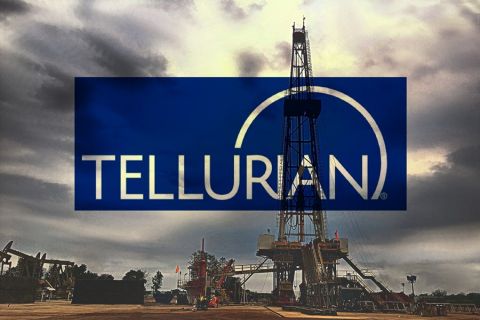
The flimsy wooden A&D suspension bridge spanning 2018 and 2019 resulted in an acute sense of cautiousness, writes Darren Barbee in his monthly A&D Trends column for Oil and Gas Investor. (Source: Hart Energy/Shutterstock.com)
[Editor's note: A version of this story appears in the July 2019 edition of Oil and Gas Investor. Subscribe to the magazine here.]
In early June, former Secretary of State Rex Tillerson was asked if the recent Occidental Petroleum Corp. deal for Anadarko Petroleum Corp. suggested more E&P consolidation was on the horizon.
Tillerson effortlessly switched back to his CEO persona to deliver his Exxon Mobil Corp.-like answer.
“The landscape is always right for a deal,” he said on stage at the 2019 KPMG Global Energy Conference in Houston. “It’s just a question of, can the right terms be put together to satisfy the needs of both the buyer and seller?”
__________________________________________________________________________________________________
RELATED:
Rex Tillerson On The ‘Nature Of The Beast’
__________________________________________________________________________________________________
On June 10, five days later, Comstock Resources Inc. said it would buy privately held Covey Park Energy LLC for $2.2 billion, including debt. Comstock will become a dominant player in the Haynesville Shale as a result. For anyone in the Covey Park IPO pool, better luck next time. (Editor’s note: Comstock’s acquisition of Covey Park closed July 16, 2019.)
“With a significant amount of private-equity capital invested inside the Haynesville, an unanswered question surrounded the exit strategy given adverse public-equity markets coupled with lack of interest in natural gas,” Kashy Harrison, senior research analyst for Piper Jaffray & Co. wrote in a June 10 report.
Comstock provides a template—merge with a public company—and “time will tell if this represents a unique transaction [given Dallas Cowboys owner Jerry Jones’ participation] or a trend of more consolidation to come,” Harrison said.
These days, the safe word for a deal’s prognosis is “generality.” The Comstock deal isn’t any more of a lock than the recently vaporized $50 billion deal that would have put Chevron Corp. in charge of Anadarko’s assets instead of Occidental.
These are treacherous times for the A&D market.
Even eyewitnesses to the gore of 2019’s first-quarter slaughter would do well to crack open Raymond James’ January-February-March autopsy report for some telling post-mortem details.
Consider the industry’s version of the Easy-Bake Oven recall. In fourth-quarter 2018, upstream companies announced $4.35 billion in mergers. By Jan. 1, fingers were being burned by a rapid fall in oil prices. The casualties included Earthstone Energy’s acquisition of Sabalo Exploration; QEP Resources Inc.’s sale of its Williston Basin assets; and the ill-fated Denbury Resources merger with Penn Virginia Corp.
The flimsy wooden A&D suspension bridge spanning 2018 and 2019 resulted in an acute sense of cautiousness.
“A meager $1.6 billion of value traded hands across 17 deals during [the first quarter], the lowest quarterly deal value recorded in over a decade, before the onset of the shale revolution and in the midst of the financial crisis,” Raymond James said.
The most dreadful quarter of A&D in 10 years managed only noncore asset sales and mineral-royalty transactions as companies continued to “core up” acreage and realign their focus on cleaning up the balance sheet, the report said.
So, as a point of caution, the monster headlines that have commanded second-quarter attention aren’t, generally speaking, written in stone or maybe even indelible ink. Occidental’s plan to take over Anadarko for $57 billion isn’t without complications, for instance.
After breaking up with Chevron, Anadarko will pay a fee of $1 billion. For $1 billion, a person could buy a substantial chunk of Occidental stock—nearly as much as activist investor Carl Icahn holds.
Icahn is suing Occidental over the “misguided” deal and wants to force changes in Occidental’s board. In a twist, he is indirectly squaring off with Warren Buffet, who put $10 billion worth of support behind Occidental’s deal.
In one of Aesop’s fables, a fisherman catches a single, small fish. The fish pleads for its life, saying if freed it will grow up into a larger and heartier meal. The fisherman prefers the certainty of a meal to the possibility of catching the fish again.
The decision to eat Mr. Limpet or fatten him up is probably relative to the fisherman’s hunger.
During his Exxon Mobil career, Tillerson concluded it was wiser to buy a company with a fracking skillset than to develop those skills internally. In his last deal with the company, Exxon Mobil purchased Delaware Basin acreage for $6.6 billion.
“We probably paid too much,” Tillerson conceded.
In fairness, the Permian can be the Bermuda Triangle of basins, mysteriously swallowing up money.
But the market’s Pavlovian demand for certainty in a commodity-based business has become its weakness. Only the best fish, in appearance, weight and cash flow, will do. And it better be able to talk, or someone is suing.
Darren Barbee can be reached at dbarbee@hartenergy.com.
Recommended Reading
NOG Closes Utica Shale, Delaware Basin Acquisitions
2024-02-05 - Northern Oil and Gas’ Utica deal marks the entry of the non-op E&P in the shale play while it’s Delaware Basin acquisition extends its footprint in the Permian.
Vital Energy Again Ups Interest in Acquired Permian Assets
2024-02-06 - Vital Energy added even more working interests in Permian Basin assets acquired from Henry Energy LP last year at a purchase price discounted versus recent deals, an analyst said.
California Resources Corp., Aera Energy to Combine in $2.1B Merger
2024-02-07 - The announced combination between California Resources and Aera Energy comes one year after Exxon and Shell closed the sale of Aera to a German asset manager for $4 billion.
DXP Enterprises Buys Water Service Company Kappe Associates
2024-02-06 - DXP Enterprise’s purchase of Kappe, a water and wastewater company, adds scale to DXP’s national water management profile.
Tellurian Exploring Sale of Upstream Haynesville Shale Assets
2024-02-06 - Tellurian, which in November raised doubts about its ability to continue as a going concern, said cash from a divestiture would be used to pay off debt and finance the company’s Driftwood LNG project.






